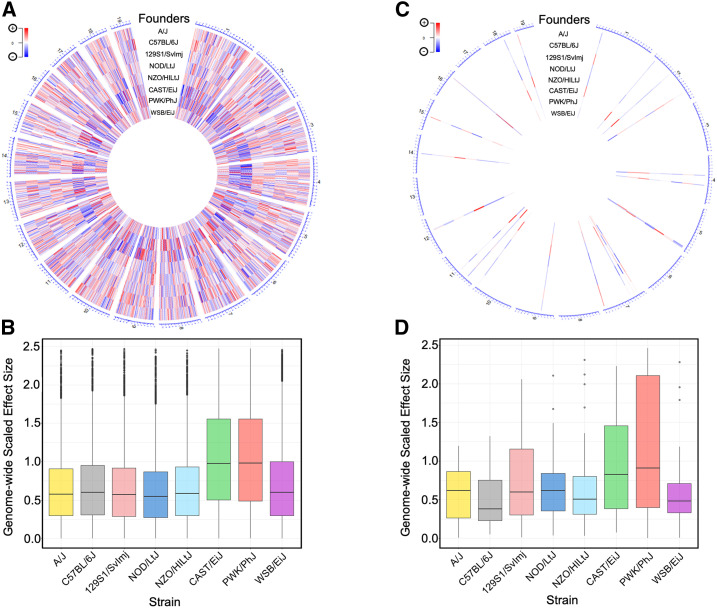Figure 4.
Alleles from wild-derived strains contribute to eQTL and mirQTL. (A) Center-scaled best linear unbiased predictor (BLUP) coefficients from eight DO founder strains are taken at the peak SNP of all significant eQTL from the additive model. Their relative effect sizes are visualized and mapped to the eQTL’s physical location on a circularized mouse genome. The sixth and seventh tracks reveal a clear pattern of peak contribution (dark red and blue bands) from wild-type founder strains CAST/EiJ and PWK/PhJ that is consistent across the genome. (B) Boxplot representation of center-scaled BLUP coefficients from all significant eQTL in the additive model. Kruskal–Wallis rank-sum test indicates significant differences (P < 2.2 × 10−16) among founder effects. Dunn’s post hoc test confirms significantly (BH-adjusted P < 1.0 × 10−4) larger effects from the CAST/EiJ and PWK/PhJ strains relative to all other strains. (C) BLUP coefficients from eight DO founder strains are taken at the peak SNP of all significant mirQTL from the additive model. Their relative effect sizes are visualized and mapped to the mirQTL’s physical location on a circularized mouse genome. Patterns of peak contribution by any particular strain is visually unclear. (D) Boxplot of center-scaled BLUP coefficients from all significant mirQTL in the additive model. Kruskal–Wallis rank-sum test does not indicate significant differences (P < 0.064) among founder effects. Dunn’s post hoc test shows a single significant (BH-adjusted P ≤ 0.05) difference, with PWK/PhJ showing higher contributions over NOD/LtJ.

